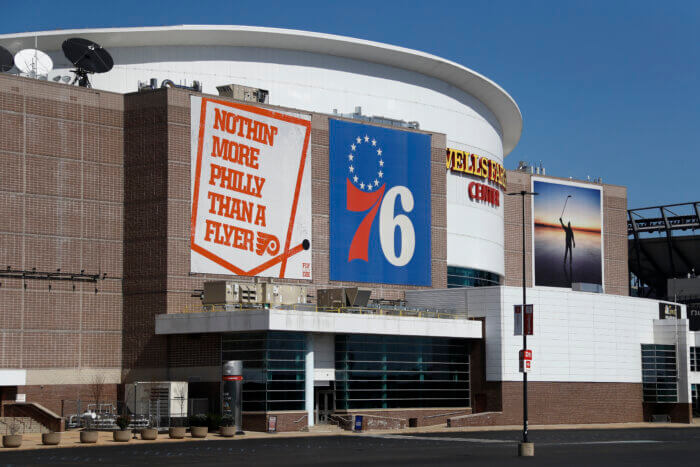Laurel Hill Cemetery, accessible by a steamboat ride up the Schuylkill River in the 1840s, was a popular Sunday afternoon destination for picnics and carriage rides.
A stretch of homes on the 1500 block of North 17th Street that currently have boards in lieu of windows were built as 1886 mini-mansions by Willis G. Hale, the same architect who designed the once-majestic Divine Lorraine, another relic of Philadelphia’s past.
Such institutions whose cultural import have been obscured by the dust left in progress’s wake are documented in “Forgotten Philadelphia,” an exhibition at the Fairmount Park Welcome Center featuring poems, short stories and visual art inspired by the transformation over time of 15 significant sites.
“People drive by these places all the time and don’t realize the stories behind them,” said Christine Wesier, founder of literary magazine Philadelphia Stories, which put together the exhibition. “I think a lot of us don’t necessarily see these treasures in our backyard.”
The jewel that caught co-founder Carla Spataro’s eye was the former Metropolitan Opera House, which has since unwittingly found itself back in the spotlight as a key component of the planned revitalization of North Broad Street.
“I have a background as an opera singer, so the building has always fascinated me since I moved to Philadelphia 23 years ago and they almost tore it down,” Spataro said. “It just seemed like the possibility for stories were pretty limitless.” The 4,000-seat hall, built in 1908 to house Oscar Hammerstein’s Philadelphia Opera Company, has been a silent film theater, a vaudeville house, a ballroom, a sports venue, an abandoplex and a church.
Spataro in a short story profiles a Met employee whose decline mirrors that of the aging theater – the formerly beautiful vaudeville performer is reduced to selling 10-cent dances during one of the hall’s seedier incarnations. The missive accompanies a painting of a tombstone that reads “MET 1906?”
Hitting the road
Weiser is taking the show on the road – she plans to anthologize the exhibition in a book and display at additional locations in the Tri-State Area. “I think Philadelphia, in general, is kind of a forgotten story, a story that is not told as frequently as some other cities,” she said. “And I think, in that regard, this is one more way we can celebrate the great cultural heritage of Philadelphia.”
Fact Tagline
Some local lore the artists found inspiring include:
The Dox Thrash House, 2340 W. Columbia Avenue (now Cecil B. Moore Ave). This North Philadelphia residence was home to printmaker Dox Thrash for the majority of his life. Thrash was an innovator in the art scene of the mid-1900s known for documenting daily life in the city’s growing African American working class neighborhoods.
The Dream Garden Mosaic in the lobby of the Curtis Center at 6th and Walnut streets. Designed by Maxfield Parrish and created by Tiffany Studios in 1916, each of the 100,000 pieces of glass comprising the mosaic is hand-fired to match one of 260 colors. “The experience of ‘finding’ it for the first time as it exists, tucked amid the busy streets around Washington Square, nearly forgotten, is perhaps the most magical part of the mural,” the exhibition’s description of the mosaic reads.
If you go
“Forgotten Philadelphia,” through Nov. 9 at the Fairmount Park Welcome Center, 1599 John F. Kennedy Boulevard. Free and open to the public Mondays through Saturdays from 10 a.m. to 3 p.m.
Before
Photos Courtesy of the Free Library of Philadelphia



After
Photos by Rikard Larma/Metro































